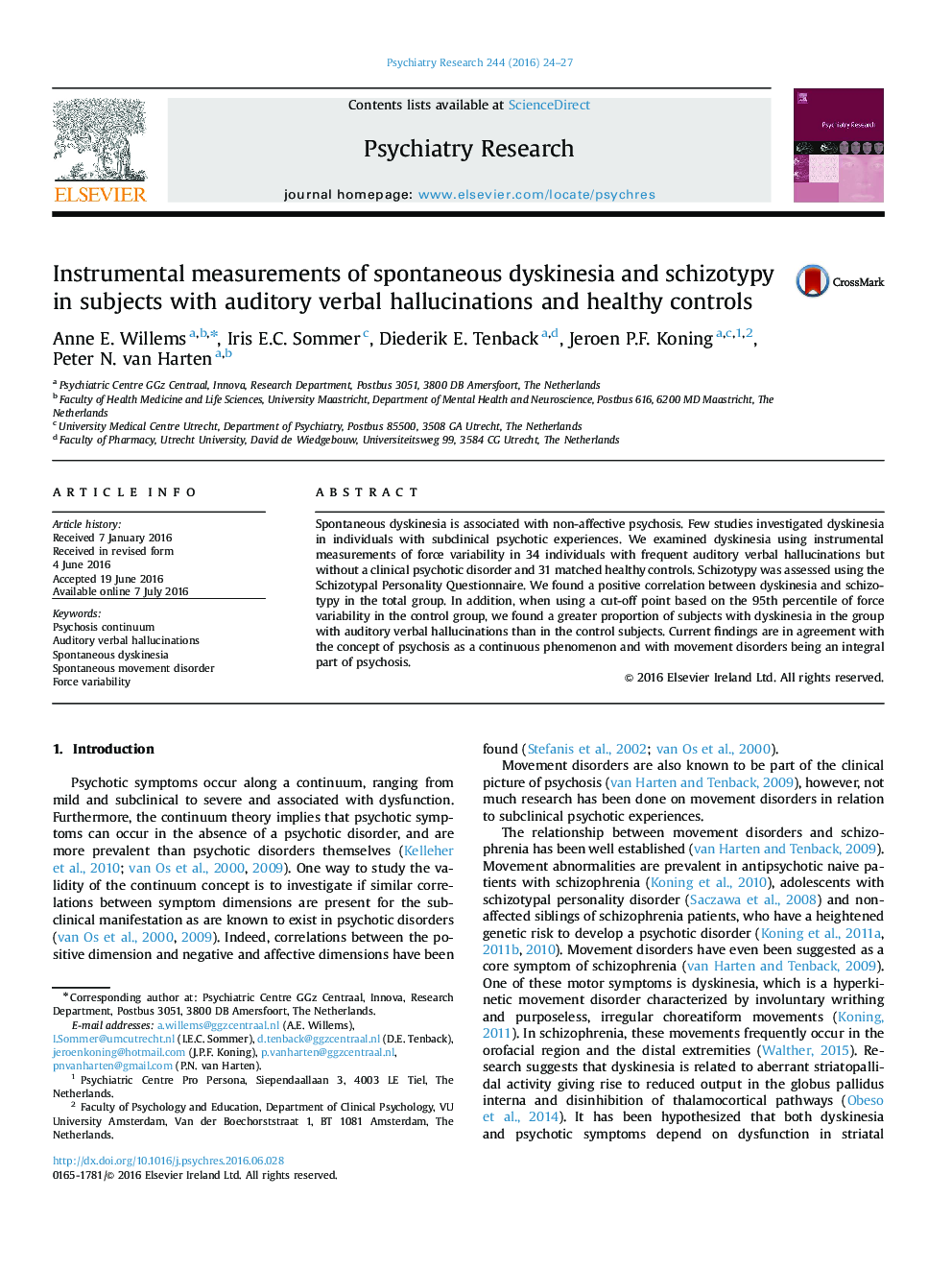| Article ID | Journal | Published Year | Pages | File Type |
|---|---|---|---|---|
| 332989 | Psychiatry Research | 2016 | 4 Pages |
•Spontaneous movement disorders are an integral part of psychotic disorders.•Mechanical instruments can detect subtle forms of dyskinesia.•Spontaneous dyskinesia and schizotypy were correlated in the total sample.•Spontaneous dyskinesia seems to behave in accordance with the psychosis continuum.
Spontaneous dyskinesia is associated with non-affective psychosis. Few studies investigated dyskinesia in individuals with subclinical psychotic experiences. We examined dyskinesia using instrumental measurements of force variability in 34 individuals with frequent auditory verbal hallucinations but without a clinical psychotic disorder and 31 matched healthy controls. Schizotypy was assessed using the Schizotypal Personality Questionnaire. We found a positive correlation between dyskinesia and schizotypy in the total group. In addition, when using a cut-off point based on the 95th percentile of force variability in the control group, we found a greater proportion of subjects with dyskinesia in the group with auditory verbal hallucinations than in the control subjects. Current findings are in agreement with the concept of psychosis as a continuous phenomenon and with movement disorders being an integral part of psychosis.
